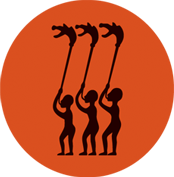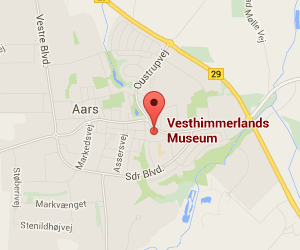Finds
The artefacts recovered in connection with the excavations at Aggersborg form one of the largest collections from Denmark's Viking Age. Most of the finds are pottery, stone and metal, but artefacts of bone and antler were also retrieved. They shed light on life at Aggersborg, but mainly that of the settlement pre-dating the late Viking Age ring fortress.
Since 2009, Vesthimmerland's Museum has collaborated with Thy-Mors Detector Group, and together the two organisations have attempted to map a large number of archaeological finds from the region. Unexpectedly, finds had been recovered not only from the Viking fort, but from the entire Aggersborg promontory. The dates of the finds were surprising too, as most finds were expected to be associated with the ring-fort, but this was not the case. The ring fortress was established in the 970s, on top of the earlier abandoned domestic settlement, and it is thought that it had a short life-span, possibly of only 10-20 years. Instead, some finds were dated to the 500-600s, whereas others were from different parts of the Viking Age, and some from the medieval period.
The artefacts from the period 600-970 AD relate to everyday life at the location, as well as to trade. Several personal items were recovered, as well as a Thor's hammer and some silver coins, either complete or fragmented. Items from the time after the ring fortress, c. 1050-1150 AD, include in particular buckles with decoration in Urnes style, with Lamb of God motifs, and with bird motifs, which all are considered Christian symbols.
Many of the finds from 1200-1400 AD are coins, so-called civil war coins and copper sterlings. These objects are evidence of the continued importance of the Aggersborg promontary located at a strategic position relating to the ferry crossing and the main north-south orientated traffic routes.
Since 2009, Vesthimmerland's Museum has collaborated with Thy-Mors Detector Group, and together the two organisations have attempted to map a large number of archaeological finds from the region. Unexpectedly, finds had been recovered not only from the Viking fort, but from the entire Aggersborg promontory. The dates of the finds were surprising too, as most finds were expected to be associated with the ring-fort, but this was not the case. The ring fortress was established in the 970s, on top of the earlier abandoned domestic settlement, and it is thought that it had a short life-span, possibly of only 10-20 years. Instead, some finds were dated to the 500-600s, whereas others were from different parts of the Viking Age, and some from the medieval period.
The artefacts from the period 600-970 AD relate to everyday life at the location, as well as to trade. Several personal items were recovered, as well as a Thor's hammer and some silver coins, either complete or fragmented. Items from the time after the ring fortress, c. 1050-1150 AD, include in particular buckles with decoration in Urnes style, with Lamb of God motifs, and with bird motifs, which all are considered Christian symbols.
Many of the finds from 1200-1400 AD are coins, so-called civil war coins and copper sterlings. These objects are evidence of the continued importance of the Aggersborg promontary located at a strategic position relating to the ferry crossing and the main north-south orientated traffic routes.


